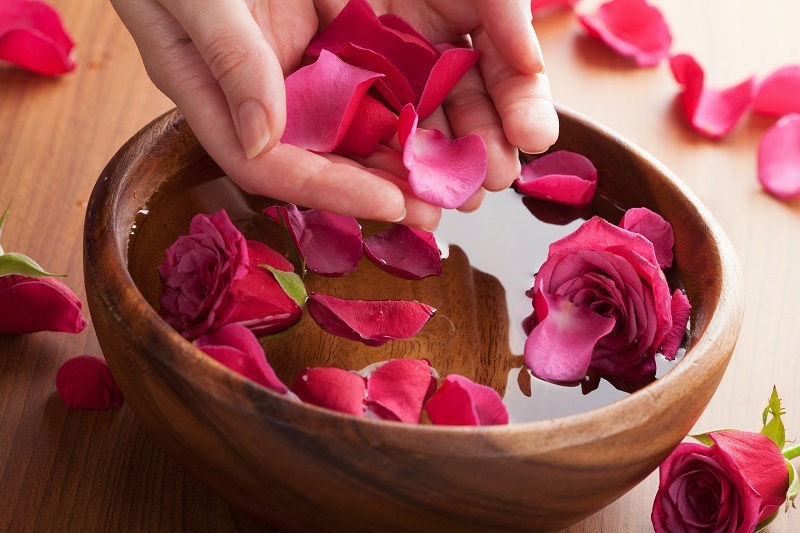Mastering Poinsettia Care for Extended Beauty
Posted on 22/08/2025
Mastering Poinsettia Care for Extended Beauty
The poinsettia is more than just a festive holiday plant. With its vibrant red, white, or pink bracts and deep green foliage, it serves as a cheerful accent to any home. Mastering poinsettia care ensures that these beautiful blooms not only survive through the Christmas season but thrive year-round. Whether you're a seasoned gardener or a beginner looking to extend the life of your poinsettias, this comprehensive guide explores expert tips, common mistakes, and advanced techniques for maximizing their stunning beauty.

Understanding the Poinsettia: A Brief Overview
Native to Mexico and Central America, Euphorbia pulcherrima--commonly known as the poinsettia plant--is renowned for its colorful "flowers," which are actually modified leaves called bracts. True poinsettia flowers are the small yellow clusters (cyathia) found at the center. Traditionally associated with Christmas, these versatile plants can become perennial highlights with the right care.
Key Facts About Poinsettias
- Scientific Name: Euphorbia pulcherrima
- Lifespan: Can live as a perennial with proper care
- Color Varieties: Red, white, pink, marbled, orange, and more
- Bloom Season: Winter (mostly December)
The Essentials of Poinsettia Plant Care
1. Choosing a Healthy Poinsettia
Start with a robust, well-branched plant free from wilt or yellow leaves. Inspect the foliage--deep green leaves and bright, unblemished bracts indicate good health. Avoid plants displayed near cold drafts or heat sources, as sudden temperature changes can damage them.
2. Optimal Placement and Light Requirements
Poinsettias require bright, indirect sunlight to maintain their color and vigor. Place your plant near a south or east-facing window, ensuring at least six hours of indirect light daily. Too much direct sunlight can scorch the leaves, while insufficient light causes leaf drop and a dull appearance.
- Turn the plant every few days for even light exposure.
- Avoid placing it in drafty locations or near heat vents.
- Night temperatures between 60-70?F (15-21?C) are ideal.
3. Proper Watering Techniques
Overwatering and underwatering are the most common pitfalls in poinsettia care. Check the top inch of soil--if it feels dry to the touch, it's time to water. Use lukewarm, filtered water, and allow excess to drain away.
- Tip: Remove decorative wrappers or poke holes for drainage to avoid root rot.
- Never let your poinsettia sit in standing water.
- Reduce watering as the plant enters its post-holiday dormant period.
4. Temperature and Humidity Regulation
Poinsettias prefer consistent temperatures and moderate humidity. Sudden drops or rises can cause stress, resulting in premature leaf loss.
- Ideal day temperature: 65-75?F (18-24?C)
- Night temperature: 60-70?F (15-21?C)
- Humidity: Keep above 40%; use a humidity tray or room humidifier in dry climates.
Avoid: Placing near fireplaces, radiators, or cold windows--extremes can damage the bracts and foliage.
5. Feeding and Fertilizing for Vibrant Growth
After the blooming period, resume feeding with a balanced, water-soluble fertilizer every 4-6 weeks. Fertilization encourages new leaf and root development but is unnecessary while the plant is in full bloom.
- Use a 20-20-20 or similar balanced fertilizer diluted to half strength.
- Do not over-fertilize--excess nutrients can burn roots and yellow leaves.
Poinsettia Aftercare: Extending Beauty Beyond the Holidays
Many consider poinsettias Christmas plants, but with the correct approach, you can prolong their display and enjoy their colors for months to come.
Post-Holiday Maintenance: Pruning and Repotting
As new growth appears in spring, prune stems back to about 4-6 inches above the soil. This encourages a compact, bushy shape and fresh foliage.
- Remove faded bracts and yellowed leaves regularly.
- Repot if roots become crowded, using a peat-based potting mix with excellent drainage.
Encouraging Rebloom: The Secret to Year-Round Poinsettia Color
Most poinsettias rarely rebloom without human intervention due to their photoperiodic nature. They require periods of darkness and specific light cycles to set their colorful bracts.
- Starting in late September or early October, give your plant 14-16 hours of total darkness nightly for 8-10 weeks.
- Place your poinsettia in a closet or cover with a light-proof box or bag from 5 p.m. to 8 a.m.
- During the day, return the plant to bright, indirect sunlight.
- Maintain regular feeding and watering but reduce fertilization.
By mid-November, you should start to see vibrant new bracts forming--just in time for the holiday season!
Troubleshooting and Common Problems in Poinsettia Care
Leaf Drop and Wilting
Leaf drop is often caused by overwatering, cold drafts, or insufficient light. Ensure stable temperatures and only water when the soil is slightly dry. Gradual yellowing or wilting may indicate a root problem or nutrient deficiency.
Pest and Disease Management
Poinsettias are generally resilient, but monitor for:
- Whiteflies and spider mites - treat with insecticidal soap or neem oil.
- Root rot - most often caused by poor drainage or overwatering.
- Leaf spot - remove affected foliage and improve air circulation.
Dealing with Faded Color
Faded bracts can result from too much sunlight, old age, or nutrient issues. As the plant ages, bracts naturally lose vibrancy; timely pruning and feeding promote fresh color.
Advanced Tips for Mastering Poinsettia Care
Propagation for More Poinsettia Plants
Would you like more poinsettias for your home? Try propagation through stem cuttings in late spring or early summer.
- Cut a 3-4" stem below a leaf node.
- Dip the end in rooting hormone and plant in moist, sterile potting mix.
- Cover with plastic to retain humidity until roots form.
Outdoor Care and Landscaping
In USDA zones 10-12, poinsettias can be grown outdoors as perennials. Plant in well-drained soil, partial shade, and provide regular irrigation. Protect from frost, as temperatures below 50?F (10?C) can harm growth.
- Mulch around the base to conserve moisture and regulate temperature.
- Prune after blooms fade to promote bushier growth.

Frequently Asked Questions About Poinsettia Care
Are Poinsettias Toxic to Pets?
Poinsettias are often rumored to be highly toxic. In reality, they are only mildly irritating to pets or humans if ingested, possibly causing mild nausea or drooling. Still, it's best to keep them out of reach of curious pets and children.
Can Poinsettias Survive Year After Year?
Absolutely! With attentive care and regular pruning, feeding, and proper light, your holiday poinsettia plant can become a long-lasting member of your indoor garden.
Final Thoughts: Creating Lasting Beauty with Poinsettia Mastery
Achieving extended beauty with poinsettias is within reach for every plant lover. With a combination of ideal lighting, precise watering, stable temperatures, and a touch of seasonal know-how, these festive beauties can brighten your space well past the holidays. Don't let your poinsettia care efforts end in January--apply these masterful tips for rewarding growth and joyful color all year long.
Key Takeaways for Long-Lasting Poinsettia Beauty
- Choose healthy plants and ensure excellent drainage.
- Provide bright, indirect light and rotate regularly.
- Maintain consistent watering and moderate humidity.
- Fertilize after blooms and prune for shape and reblooming.
- Protect from drafts, cold, and sudden temperature swings.
Mastering poinsettia care for extended beauty transforms an annual tradition into a year-round delight. Start today, and let your poinsettias thrive!
```






